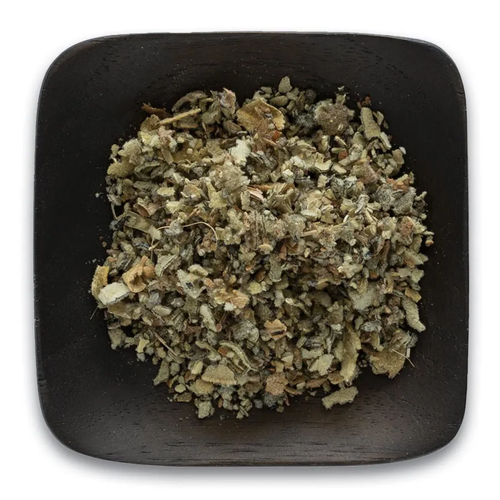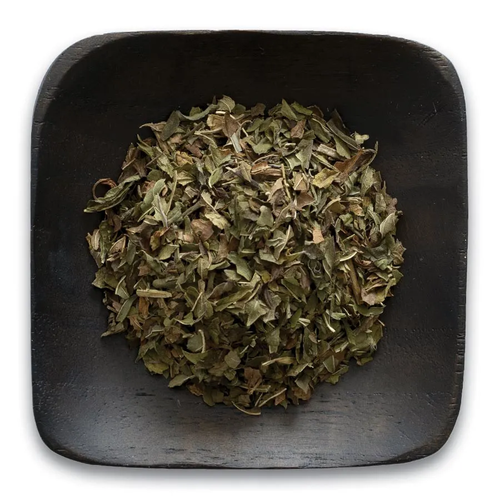Product Description
The large, velvety leaves of the mullein plant make a soothing herbal tea. As an ingredient in salves and poultices, they have the same soothing effect on the skin. Mullein is a striking, easy to identify plant with large, densely furred leaves and a tall, stately flowering stalk. While it's native to Europe and Asia, mullein has become naturalized across North America and Asia. It can be found growing in a wide array of regions, from dry and rocky to wastelands and field edges. Mullein is usually biennial, meaning it seeds in the second year then dies. First year plants are rosettes of oval-shapped, woolly, grey-green leaves. In the second year, the leaves at the base of the plant (basal leaves) grow large and elongated, with successively smaller leaves developing on the lower part of a one- to five-foot flowering stalk. If you see a plant send up more than one stalk, it's generally a result of damage to the original stalk. Fragrant yellow flowers and buds are densely packed around the stalk. As the energy and virtues of the leaves move up the stem and into the flowers, the large lower leaves turn yellow and lose their effectiveness.
Directions
To prepare as a tea, pour 8 oz. boiling water over 2 tsp. of herb. Cover and steep for 5-10 minutes, strain and serve immediately.Suggested Uses
Mullein leaves make a tea that's gently soothing to both the skin and mucosa. Besides its soothing and calming properties, it's also cooling when there's a feeling of hot, dry tightness in the throat or chest. Another age-old use of mullein leaf is as an ingredient in herbal smoking mixtures. Mullein leaves are also an ingredient in salves, syrups and poultices.







